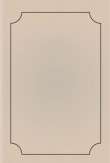قراءة كتاب Harper's Young People, November 30, 1880 An Illustrated Monthly
تنويه: تعرض هنا نبذة من اول ١٠ صفحات فقط من الكتاب الالكتروني، لقراءة الكتاب كاملا اضغط على الزر “اشتر الآن"

Harper's Young People, November 30, 1880 An Illustrated Monthly
the same time placing them in a position in which the water has the least lift upon them; while he carefully apportions his different lengths of timber to the different depths of water in his pond, so that the upper point of none of them shall approach near enough to the surface to be caught by the winter ice.
From what has been said, it will be readily seen that the maintenance of the dam is a matter of vital importance to the beaver. Some say that the pilot beaver sleeps with his tail in the water, in order to be warned of the first mishap to the dam; but as there is no foundation for such an assertion, it may be set down as a very improbable tale. The Indians avail themselves of this well-known solicitude to catch them; having broken the dam, the risk is immediately perceived by the lowering of the water in the hut, and the beaver, sallying forth to repair the break, is slaughtered in the breaches.
As the supply of food in the vicinity of the dam becomes diminished, the beaver is obliged to go higher up the stream and more distant from its banks to procure his winter stores, and this necessity gives rise to fresh displays of his lumbering and engineering resources. In consequence of the distance and the limited duration of the high-water period favorable to transport, the wood is collected into a sort of raft, which, as lumber-men assert, is manned by the beaver, and steered by its tail, in the same manner as Norway rats are known to cross streams of water. When the raft grounds, a temporary dam is immediately thrown across the stream below the jam, by which the waters are raised and the raft floated off and brought down to the dam, which is then suddenly torn away, and on the crest of the accumulated body of water the raft is carried safely down to where it is to be used.


